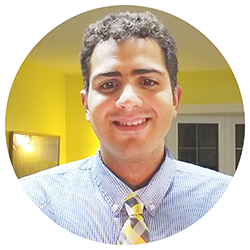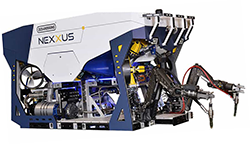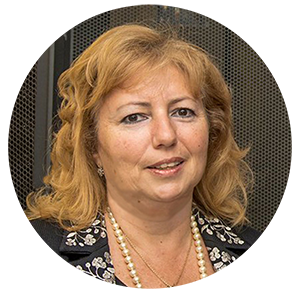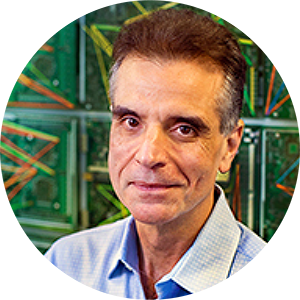 Like most other college freshmen, David Chapman wasn’t entirely sure what he wanted to major in when he started at the University of Maryland, Baltimore County (UMBC). But unlike his classmates, Chapman was 12 years old. The home-schooled prodigy had his pick of schools and majors, and his first inclination was to stick with what he loved most.
Like most other college freshmen, David Chapman wasn’t entirely sure what he wanted to major in when he started at the University of Maryland, Baltimore County (UMBC). But unlike his classmates, Chapman was 12 years old. The home-schooled prodigy had his pick of schools and majors, and his first inclination was to stick with what he loved most.
“I went into computer science because I wanted to know how video games were made,” he said. At the time, the games he played on his PlayStation were transitioning from 2D to 3D graphics and Chapman searched every corner of the Internet to learn how they were made. At UMBC, he quickly shifted away from video games, but the fascination with computer renderings of images endured. “If you look at an image, you can kind of see what math looks like,” Chapman said. “If you’re using math to analyze images using computers, then that gives a pictorial representation of math in some sense. That was one of those things I always found exciting, and I still find that exciting.”
 Armed with a PhD in computer science from UMBC—he defended his thesis at age 24—Dr. Chapman is still fascinated by imaging, but now he’s creating image processing algorithms to detect lung cancer from CT scans. He’s programmed underwater robots, written algorithms to predict El Niño from satellite and in-situ measurements, and has become an expert in artificial intelligence, computer vision, and machine learning. Now Chapman is bringing those skills to the University of Miami’s Institute for Data Science and Computing (IDSC), where he’s joining a specialized unit dedicated to artificial intelligence and machine learning (AI/ML).
Armed with a PhD in computer science from UMBC—he defended his thesis at age 24—Dr. Chapman is still fascinated by imaging, but now he’s creating image processing algorithms to detect lung cancer from CT scans. He’s programmed underwater robots, written algorithms to predict El Niño from satellite and in-situ measurements, and has become an expert in artificial intelligence, computer vision, and machine learning. Now Chapman is bringing those skills to the University of Miami’s Institute for Data Science and Computing (IDSC), where he’s joining a specialized unit dedicated to artificial intelligence and machine learning (AI/ML).
“He was one of those geniuses.
When he was 15, he took my
advanced operating system class
and blew up the curve.”
 Yelena Yesha, the Director of the AI/ML unit, first met Chapman when he was just nine years old. She encouraged him to attend UMBC, where she was a professor at the time, and worked with him throughout his time there. When Yesha made the move to IDSC, she heavily recruited him to join her as part of an ongoing expansion of the Institute. “He was one of those geniuses,” said Yesha, herself a world-renowned computer scientist who has authored 11 books and more than 200 papers. “When he was 15, he took my advanced operating system class and blew up the curve.”
Yelena Yesha, the Director of the AI/ML unit, first met Chapman when he was just nine years old. She encouraged him to attend UMBC, where she was a professor at the time, and worked with him throughout his time there. When Yesha made the move to IDSC, she heavily recruited him to join her as part of an ongoing expansion of the Institute. “He was one of those geniuses,” said Yesha, herself a world-renowned computer scientist who has authored 11 books and more than 200 papers. “When he was 15, he took my advanced operating system class and blew up the curve.”
Chapman is one of several joint appointments hired by IDSC over the past year as part of a broader strategy to push the data science and AI/ML techniques conducted at IDSC to departments across the University. Chapman’s appointment is in the Department of Computer Science, where he’ll be teaching classes and doing research, but he’s already working with the Miller School of Medicine and planning to work with experts in other schools. IDSC Director Nick Tsinoremas said he didn’t hire Chapman based solely on his intellect, but because of the communication and collaboration skills he’s demonstrated throughout his career. “He’s part of the future of what we’re trying to do at IDSC,” Tsinoremas said. “He’s amazing.”

Chapman has already worked in a wide variety of fields, starting with a stint at Columbia University’s Lamont-Doherty Earth Observatory. There, he was a lone computer scientist working with climatologists, climate physicists, and statisticians to improve the hyperspectral imaging used to observe and forecast the effects of El Niño, which heavily influences the rainfall and temperature patterns of the U.S., Mexico, and other countries bordering the eastern Pacific Ocean.
He then jumped into the private sector, working for Oceaneering International to improve the autonomous underwater robots pioneered by the Houston-based company. There, Chapman explored a completely different side of computer science, working on underwater sonar and LIDAR systems, and working with sailors, mechanical engineers, and technicians to fine-tune their devices. “I always want to learn more,” he said. “I want to learn things that are a little bit outside of my discipline just to get a better context.”
After three years with Oceaneering International, Chapman returned to UMBC as an assistant professor and researcher. There, his research circled back to the world of computer imaging. Chapman chose to focus on medical imaging in part because he feels there’s a “moral component” to that work. He works with the National Alliance Against Disparities in Public Health, a nonprofit organization using scientific research to reduce health disparities in the U.S., and RAD-AID International, a nonprofit that is delivering radiology and imaging technologies to more than 40 impoverished nations, all in an effort to “democratize the development of machine learning.”
In recent years, his research has focused on improving the ability of computers to diagnose lung cancer from CT scans and X-ray images. In its current form, “computer vision” can be trained to identify tumors and cancers from a limited group of examples. But when those algorithms are exposed to different sets of X-rays and CT scans, they suddenly can’t figure out what they’re seeing. The technology is still in its early stages, but is already being used in some clinical practices, so Chapman is trying to fast-track improvements.

“AI has certainly gotten more powerful, but machines haven’t necessarily gotten smarter,” he said. “They have no common sense whatsoever. Therein lies the problem. I’m trying to address that gap.” That goal is what drove him to Coral Gables. He saw Yesha, his former teacher (who is also working to improve medical imaging), he saw that IDSC was planning to continue expanding its AI/ML team, and he saw an opportunity to collaborate with radiologists at the Miller School of Medicine and practitioners throughout the University of Miami Health System (UHealth) and the Jackson Health System.
“It seemed like that was a great opportunity for someone like me, who doesn’t just work in a vacuum, but who wants to branch out and meet people who know things I don’t know,” he said.
Tags: Computer Vision, David Chapman, Digital Image Diagnostics, National Alliance Against Disparities in Public Health, Nick Tsinoremas, RAD-AID International, X-ray, Yelena Yesha



